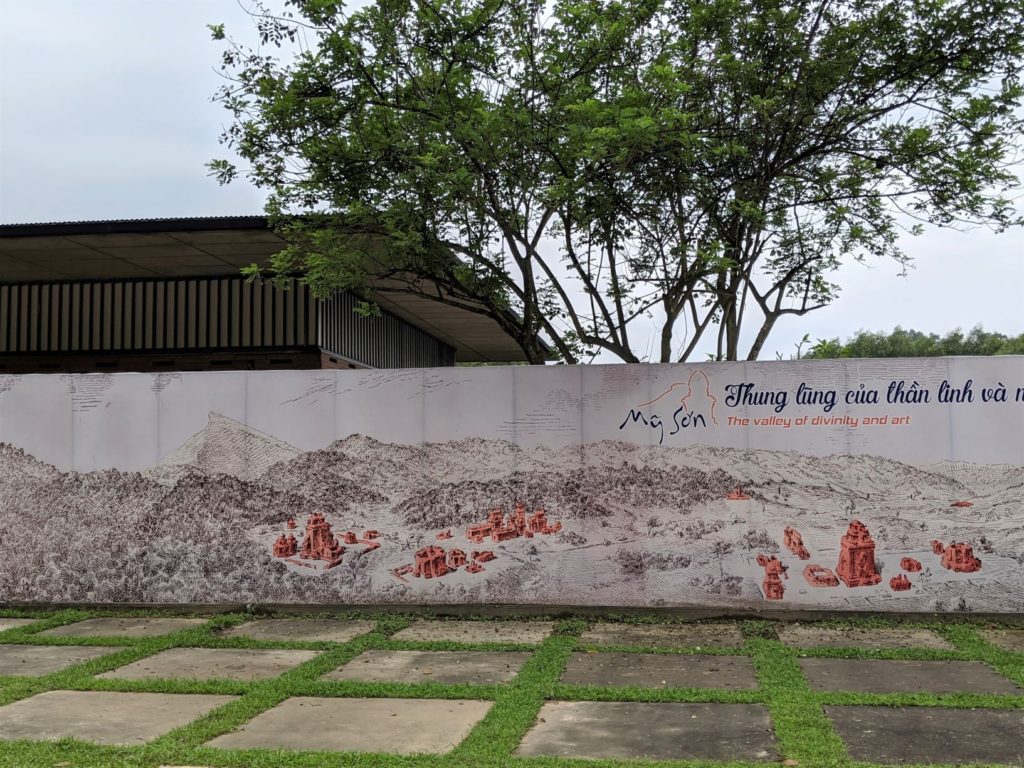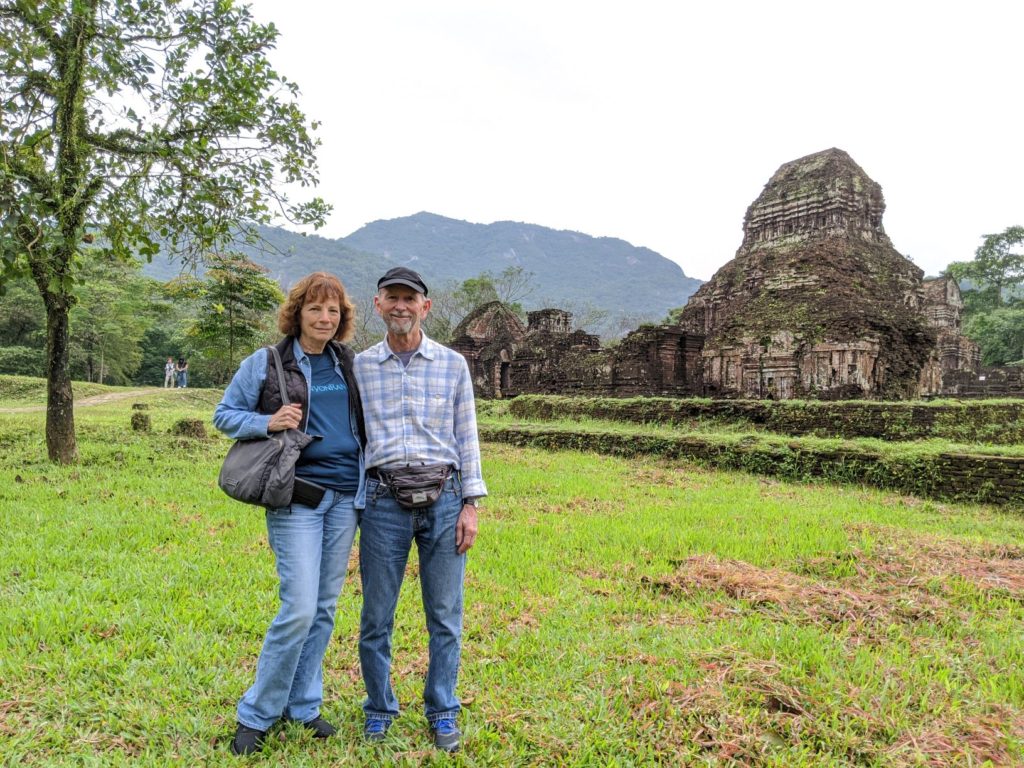
My husband and I visited My Son before we truly understood the full antiquity and diversity of the many ethnic groups living in Vietnam. I don’t recommend this approach. But the obvious care with which the site has been and is being restored speaks to the importance of this ancient site and the respect the Vietnamese have for it.
The sign above, located at the drop-off point where visitors must leave their cars and buses, gives some indication of the extent of the site. This drop-off area is still some distance from the actual historical site. A special electric vehicle brings the visitors along a specially built road to the actual sanctuary. Isolated towers may be seen in the distance, Piranesian ruins surrounded by jungle.


At our destination, we learn that My Son was built by the Cham people during the thousand-year heyday of the Champa kingdom (or kingdoms; apparently, scholars disagree), from the fourth to about the fourteenth century A.D. The Champa kingdom in central Vietnam, where My Son is located, was defeated by the Vietnamese from the north in 1471, and the Cham people fled south. Many still live in southern Vietnam.
My Son was only ever a temple complex, at a short remove from the capital city. The Cham were, at that time, Hindu. (Most of the ones living in the south today are Muslim.) And the magnificent red-brick temples of My Son were Hindu temples and other religious buildings.





Located deep in the jungle, the temples of My Son were allowed to fall into ruin for centuries, until the late 1800s, when the French attempted some restoration. But war put an end to that, and when the North Vietnamese used the site as one of their bases, the Americans bombed it. Bomb craters are still visible. Several of the temples were severely damaged.



Perhaps this is fitting for a site largely devoted to Shiva, the god of destruction and war. But the site is beautiful, the temples magnificent even in ruin, and the complex an important monument in the history of civilization on Earth. As visitors and citizens of a diverse and wonderful world, my husband and I are grateful that My Son is now being carefully restored as a UNESCO World Heritage Site.
Before leaving, we were treated to a performance of Cham music and dance. Quite a treat!























